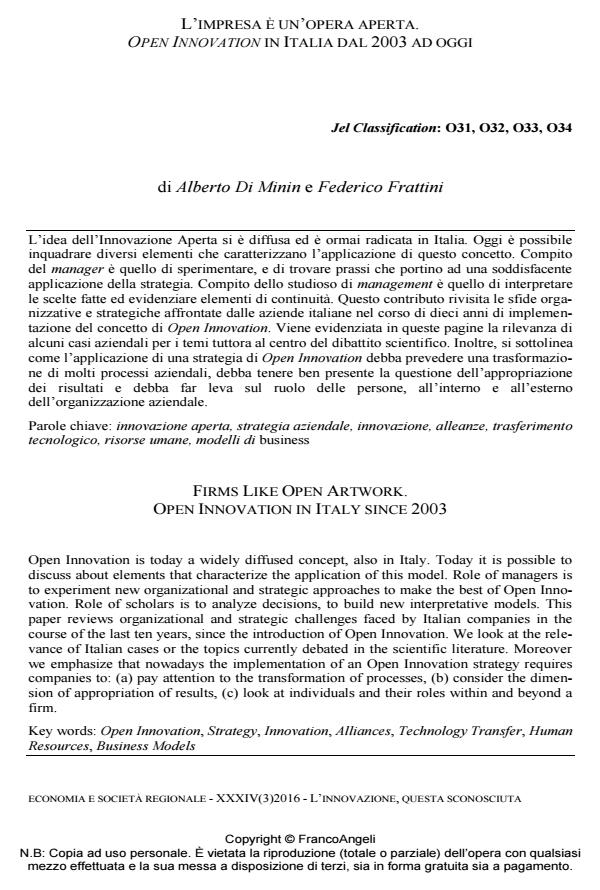L’impresa è un’opera aperta. Open innovation in italia dal 2003 ad oggi
Journal title ECONOMIA E SOCIETÀ REGIONALE
Author/s Alberto Di Minin, Federico Frattini
Publishing Year 2017 Issue 2016/3
Language Italian Pages 19 P. 19-37 File size 363 KB
DOI 10.3280/ES2016-003002
DOI is like a bar code for intellectual property: to have more infomation
click here
Below, you can see the article first page
If you want to buy this article in PDF format, you can do it, following the instructions to buy download credits

FrancoAngeli is member of Publishers International Linking Association, Inc (PILA), a not-for-profit association which run the CrossRef service enabling links to and from online scholarly content.
L’idea dell’Innovazione Aperta si è diffusa ed è ormai radicata in Italia. Oggi è possibile inquadrare diversi elementi che caratterizzano l’applicazione di questo concetto. Compito del manager è quello di sperimentare, e di trovare prassi che portino ad una soddisfacente applicazione della strategia. Compito dello studioso di management è quello di interpretare le scelte fatte ed evidenziare elementi di continuità. Questo contributo rivisita le sfide organizzative e strategiche affrontate dalle aziende italiane nel corso di dieci anni di implementazione del concetto di Open Innovation. Viene evidenziata in queste pagine la rilevanza di alcuni casi aziendali per i temi tuttora al centro del dibattito scientifico. Inoltre, si sottolinea come l’applicazione di una strategia di Open Innovation debba prevedere una trasformazione di molti processi aziendali, debba tenere ben presente la questione dell’appropriazione dei risultati e debba far leva sul ruolo delle persone, all’interno e all’esterno dell’organizzazione aziendale.
Keywords: Innovazione aperta, strategia aziendale, innovazione, alleanze, trasferimento tecnologico, risorse umane, modelli di business
- Innovazione e piccole imprese: dimensioni e prospettive analitiche Giorgio Gosetti, in SOCIOLOGIA DEL LAVORO 147/2017 pp.59
DOI: 10.3280/SL2017-147004
Alberto Di Minin, Federico Frattini, L’impresa è un’opera aperta. Open innovation in italia dal 2003 ad oggi in "ECONOMIA E SOCIETÀ REGIONALE " 3/2016, pp 19-37, DOI: 10.3280/ES2016-003002